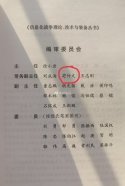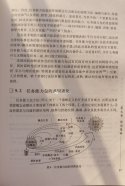You are using an out of date browser. It may not display this or other websites correctly.
You should upgrade or use an alternative browser.
You should upgrade or use an alternative browser.
News on China's scientific and technological development.
- Thread starter Quickie
- Start date
I thought that's an Australian company.China's Unitree dog scares cheetahs. That is a nimble little robot.
AssassinsMace
Lieutenant General
I thought that's an Australian company.
There's hardly a success for CSP in any area, tbh.So why did US CSP (Concentrated Solar Power) fail but succeeded in other places such as China? Success of solar in all countries is a win-win situation for everyone.
I have my friend in college who now has been working on EPC contract in ACWA Power's Dubai CSP project for 3 years, and he said that he didn't think CSP will outcompete other forms of renewable energy, e.g., photovoltaic and wind turbine. They are not so reliable.
Nowadays, onshore wind turbine prices in China has fallen to 2000 RMB/kilowatt, namely $320/kw (ex work). In Statista the cost of turbine in 2020 is $1355 in case you wonder (may include installation).
I am currently in the wind turbine sector, and I know the cost very well. Even in central Asia area where logistics take a heavy part in the total cost structure of WT projects, price can hardly exceed 5000 RMB or $790/kw.
Thus, CSP is far more sensitive than wind and PV when the plant underperform. Power Purchase Agreement, or PPA, is the main source for developers to have cash flow. The parties of PPA generally includes developers, grid companies and financiers. As customers, grid companies generally require stable renewable energy so not to disturb the grid, otherwise they will not pay for the electricity that plants generate. So CSP is easier to perish because of longer construction period and higher cost. Sadly, renwables are not so reliable as coal-fired power plants, and they underperform from time to time.
from IEA.
Artificial intelligence is partially behind Chinese athletes' excellent performance at the Beijing 2022 Winter Olympics so far, showcasing the big potential of AI in the sports sector, experts said.
After Xu Mengtao won gold in the women's freestyle skiing aerials at the Games on Monday, an AI scoring system used in her training has been gaining growing attention.
The system is developed by Chinese AI company Xiaoice to help boost the training efficiency for freestyle skiing aerials. The Beijing-based company said it has innovated a snow sports analysis model to provide training scores and analysis for athletes' motion trajectories and angles.
Every time an athlete jumps, the system-Xiaoice-International Athletic Scoring System or X-IASS-will make a professional judgment, which is highly consistent with international refereeing scoring standards, and quantifies the whole process of the three stages of athletes' takeoffs, midair moves and landings to judge their scores.
According to Xiaoice, because some moves in freestyle skiing aerials are risky, daily training maneuvers of athletes are limited.
Li Di, CEO of Xiaoice, said the analysis of multidimensional indicators such as trajectory, body posture and angle provides coaches with guidance on how to achieve the most-efficient scientific training
By improving fans' viewing experience of sporting events, boosting training efficiency for athletes and being virtual umpires and assistant coaches, AI has the potential to inject new vitality into the entire chain of sports training and participation, according to a report from accountancy firm PwC.
PwC said AI has a role to play in talent identification and selection, pregame preparation, in-game performance and postgame analysis as well as boosting management and operations of sports institutions.
"AI technologies are evolving fast and growing increasingly important for a sporting organization's ability to win games, improve coaches and players, manage their operations and grow, serve and retain their fans," PwC said in the report.
Li from Xiaoice agreed, saying that data and quantitative analysis have been used in games for a long time, but AI is considerably elevating every aspect of sports to a new level.
Chen Peijie, president of the Shanghai University of Sport, said earlier that the use of novel technologies in sports will help improve the quality and effectiveness of sports development and promote deepened integration of mass fitness and health.
There are some interesting talks about Gou Zhongwen, who is the director of the State Sports General Administration. I used google translate for the English version.



【苟仲文】同志太厉害了
我收拾书籍时,看到一本十来年前我买的一本书,然后惊到了,居然看到了【苟仲文】同志。
他在编审委员会名单里,是常务副主任。
这本由国防工业出版社出版,只印刷了3000册对书,定价是126元RMB,非常非常小众,属于专业书籍,我当年出于好奇,想研究美军的军事技术发展,才买的。
这本书是讲信息化时代,美军转型计划的,而苟仲文是学习信息化专业出身的。
他是西安电子科技大学信号、电路与系统专业研究生毕业,工学硕士,在职研究生毕业(电子科技大学管理学院管理科学与工程专业),管理学博士,研究员级高级工程师。
所以这本书应该是他参与指导下出版的。
苟仲文同志后来任国家体育总局局长、党组书记,北京2022年冬奥会和冬残奥会组织委员会执行主席兼中国奥委会主席。积极倡导科技参与体育发展,绝对和他的理工科专业技术出身背景有关。
[Gou Zhongwen] Comrade is too powerful
When I was packing my books, I saw a book that I bought more than ten years ago, and I was shocked to see Comrade [Gou Zhongwen].
He is on the list of editorial committees and is the executive deputy director.
This book was published by the National Defense Industry Press. Only 3,000 copies of the book were printed. The price was 126 yuan.
This book is about the transformation plan of the U.S. military in the information age, and Gou Zhongwen came from a major in information technology.
He is a graduate of Xidian University majoring in signal, circuit and system, a master of engineering, an on-the-job graduate (major in management science and engineering from the School of Management, University of Electronic Science and Technology of China), a doctor of management, and a researcher-level senior engineer.
So this book should be published under the guidance of his participation.
Comrade Gou Zhongwen later served as director of the State Sports General Administration, secretary of the party group, executive chairman of the Beijing 2022 Winter Olympics and Winter Paralympics Organizing Committee and chairman of the Chinese Olympic Committee. Actively advocating the participation of science and technology in sports development is absolutely related to his background in science and technology.
I'm a noob on this, so I'm just asking.There's hardly a success for CSP in any area, tbh.
I have my friend in college who now has been working on EPC contract in ACWA Power's Dubai CSP project for 3 years, and he said that he didn't think CSP will outcompete other forms of renewable energy, e.g., photovoltaic and wind turbine. They are not so reliable.
I would've thought the fact that CSP allows storage of heat underground would be a big advantage in smoothing power production vs photovoltaic and wind? I seem to remember reading that some of the projects stored enough heat that production was possible even at night? In terms of reliability, I'm guessing some kind of sterling engine or steam turbine is used, which would be comparable to what thermal power plants use? In terms of cost, isn't it just chicken and egg in that more adoption => lower cost => more adoption and so forth, so eventually, it'll be cost competitive? Just wondering.
1. I’m not professional in CSP either, but at least in wind and PV sector, smoothing and storage issues are largely solved by full power converters and energy storage systems. Electrochemical (battery), supercapacitor, or even simple hydro-lifting are cheap, feasible and reliable. Molten salt, meanwhile, requires highly sophisticated engineering and construction to design the cycle and watch out for corrosion and heat waste.I'm a noob on this, so I'm just asking.
I would've thought the fact that CSP allows storage of heat underground would be a big advantage in smoothing power production vs photovoltaic and wind? I seem to remember reading that some of the projects stored enough heat that production was possible even at night?
CSP also has stricter working condition. When sun is shining and wind is blowing, good; but when sun is not so shiny, and wind is not blowing so hard, well, turbines and photovoltaics still have some output, although in a poor quality and efficiency. However, as I mentioned, they can have the energy converted to meet grid code standard or stored in their batteries for night output, or even used to produce green hydrogen. But for CSP, no. Molten salt requires to work between 220 °C to 500 °C otherwise it won’t produce electricity. If sun doesn’t shine for a long time, the cost for keeping salt molten may be huge, or the whole cycle will be blocked. That’s why CSPs are built on flat Gobi or desert with minimal precipitation and vegetation.
2. Stirling engine is widely used in AIP submarines to recharge the battery, and steam turbine is a must-have in coal-fired power plants, they are not opposed to thermal power plants, because thermal plants convert energy in accordance with Carnot Principle, and both Stirling and steam turbine are parts of the cycle. For geothermal, Stirling may be preferred, for it doesn’t require good quality (which is higher temperature) of heat source, and geothermal usually has only 150 °C which is unfeasible for water to generate high-quality steam. For coal-fired, or combined cycle gas turbine (CCGT), steam turbine provides far higher output.In terms of reliability, I'm guessing some kind of sterling engine or steam turbine is used, which would be comparable to what thermal power plants use?
3. You can say so. It’s both the development of technology and market competition due to lower threshold. Taking wind turbine generator (WTG) as example, the first onshore wind farm contains 20 sets of 30 kW turbines in USA in 1980, now the capacity of single onshore turbine is more than 6 MW thanks to the fierce competition between Chinese company (offshore can be as big as 14 MW per unit). Wind market didn’t reach 4 MW in 2015 because the Chinese haven’t reached the global market yet. WTG is all about making generator bigger while making towers withstand the heavier load, it’s quite simple, configurations are more or less the same. With new material for generators and new technique and design for towers, WTG can be cost effective.In terms of cost, isn't it just chicken and egg in that more adoption => lower cost => more adoption and so forth, so eventually, it'll be cost competitive?
What about CSP? CSP has one more conversion of energy, two cycles, and a lot of trouble in construction. Higher threshold, longer repayment period hinders investors from participation.
1. I’m not professional in CSP either, but at least in wind and PV sector, smoothing and storage issues are largely solved by full power converters and energy storage systems. Electrochemical (battery), supercapacitor, or even simple hydro-lifting are cheap, feasible and reliable. Molten salt, meanwhile, requires highly sophisticated engineering and construction to design the cycle and watch out for corrosion and heat waste.
CSP also has stricter working condition. When sun is shining and wind is blowing, good; but when sun is not so shiny, and wind is not blowing so hard, well, turbines and photovoltaics still have some output, although in a poor quality and efficiency. However, as I mentioned, they can have the energy converted to meet grid code standard or stored in their batteries for night output, or even used to produce green hydrogen. But for CSP, no. Molten salt requires to work between 220 °C to 500 °C otherwise it won’t produce electricity. If sun doesn’t shine for a long time, the cost for keeping salt molten may be huge, or the whole cycle will be blocked. That’s why CSPs are built on flat Gobi or desert with minimal precipitation and vegetation.
2. Stirling engine is widely used in AIP submarines to recharge the battery, and steam turbine is a must-have in coal-fired power plants, they are not opposed to thermal power plants, because thermal plants convert energy in accordance with Carnot Principle, and both Stirling and steam turbine are parts of the cycle. For geothermal, Stirling may be preferred, for it doesn’t require good quality (which is higher temperature) of heat source, and geothermal usually has only 150 °C which is unfeasible for water to generate high-quality steam. For coal-fired, or combined cycle gas turbine (CCGT), steam turbine provides far higher output.
3. You can say so. It’s both the development of technology and market competition due to lower threshold. Taking wind turbine generator (WTG) as example, the first onshore wind farm contains 20 sets of 30 kW turbines in USA in 1980, now the capacity of single onshore turbine is more than 6 MW thanks to the fierce competition between Chinese company (offshore can be as big as 14 MW per unit). Wind market didn’t reach 4 MW in 2015 because the Chinese haven’t reached the global market yet. WTG is all about making generator bigger while making towers withstand the heavier load, it’s quite simple, configurations are more or less the same. With new material for generators and new technique and design for towers, WTG can be cost effective.
What about CSP? CSP has one more conversion of energy, two cycles, and a lot of trouble in construction. Higher threshold, longer repayment period hinders investors from participation.
Thank you for your response.
